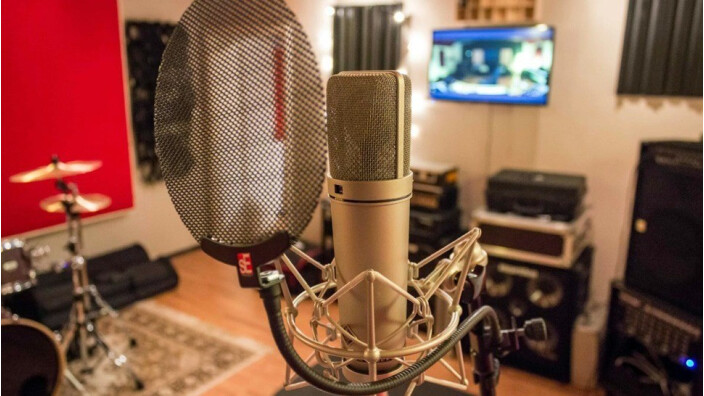This week we'll begin discussing one of the most important topics of this series: vocal recording. As you will see in this brief introduction, recording vocals correctly doesn't just mean putting up your best mic with the ideal preamp in the right environment... Far from it.

Prelude
People who know me a bit are probably aware that I’m not entirely objective when I highlight the importance of vocals in this guide. Indeed, my musical beginning have a lot to do with that: before I became an audio professional I was a singer. The preeminence of vocals in modern productions is indisputable, regardless of whether its singing, speaking, slamming or rapping. But that’s not the only argument in favor of a specific handling of this particular “instrument.”
From a strictly biological point of view, the human ear has been naturally conceived to be more sensitive to the human voice, in comparison to other instruments. This means that even the most naive of listeners we’ll be able to notice the most insignificant “imperfection, ” the tiniest “oddity” and anything else that might seem unusual. That’s just the way we’re genetically programmed. And it’s good to be aware of this right now because, on the one hand, you will be able to avoid any mistakes during tracking or editing, and on the other, you can eventually use this knowledge in a creative way to catch the attention of your listeners… But that’s another topic.
Anyway, another important fact that speaks in favor of putting particular attention to the vocal tracks is that it’s a completely unique instrument. In fact, it’s the only one that can be read at four different “levels”: vocals can be melodic or rhythmic, but they can also carry a meaning and be a distinguishing trait. While the two first levels are obvious, the two other probably deserve some explanation.
The voice is a carrier of meaning for at least two reasons: On one hand, words have a meaning and are, in fact, intellectually comprehensible as long as you know the language they are in. But beyond the meaning of the words, the way they are intonated also conveys meaning, all the moans, growls, breathings, etc. can be interpreted by anyone on an essentially emotional level. One of the most memorable examples was reminded to me a fortnight ago by my best friend: the exhalation that marks the start of Jeff Buckley’s famous rendition of Hallelujah. Goosebumps guaranteed!
As for the song being a distinguishing trait, it’s pretty simple: no other instrument can define better the identity of a musician. Granted, some people can tell a Telecaster from a Les Paul or the playing of Pastorius among a thousand bass players, but almost anybody can identify a person by his/her voice. That applies to everyday life and obviously also to recordings. Certain artists even have some vocal tics that allows them to be identified within seconds, like Michael Jackson and his famous “hee-hee.”
These four elements definitely make vocals an instrument unlike any other. Consequently, when recording vocals you need to pay special attention to five essential points so that these four elements are adequately captured: tuning, rhythmic precision, intelligibility, emotion and, finally, respect for the timbre and vocal tics of the artist. If you manage to accomplish these five things when recording vocals, you’ll have a perfect track. And in order to achieve all of these, the choice and placement of a microphone and the price of the preamp play a minor role… Hey, but don’t get me wrong, I don’t intend to minimize the purely technical aspects of a vocal recording, I’m only trying to put things in their rightful place.
The goal of this brief introduction was to let you know why in the following articles we’ll not only look at the technical aspects but also, and foremost, at these other aspects, which are much more important when you want to get the best recordings. And you might be tempted to say that everything I told you about today doesn’t have anything to do with the audio engineer. And it’s true that, for the most part, it’s the artist’s responsibility. I concede to that, but there are a couple of things you can do at your level to make it easier to get the desired result, as you will see in the next installment!

